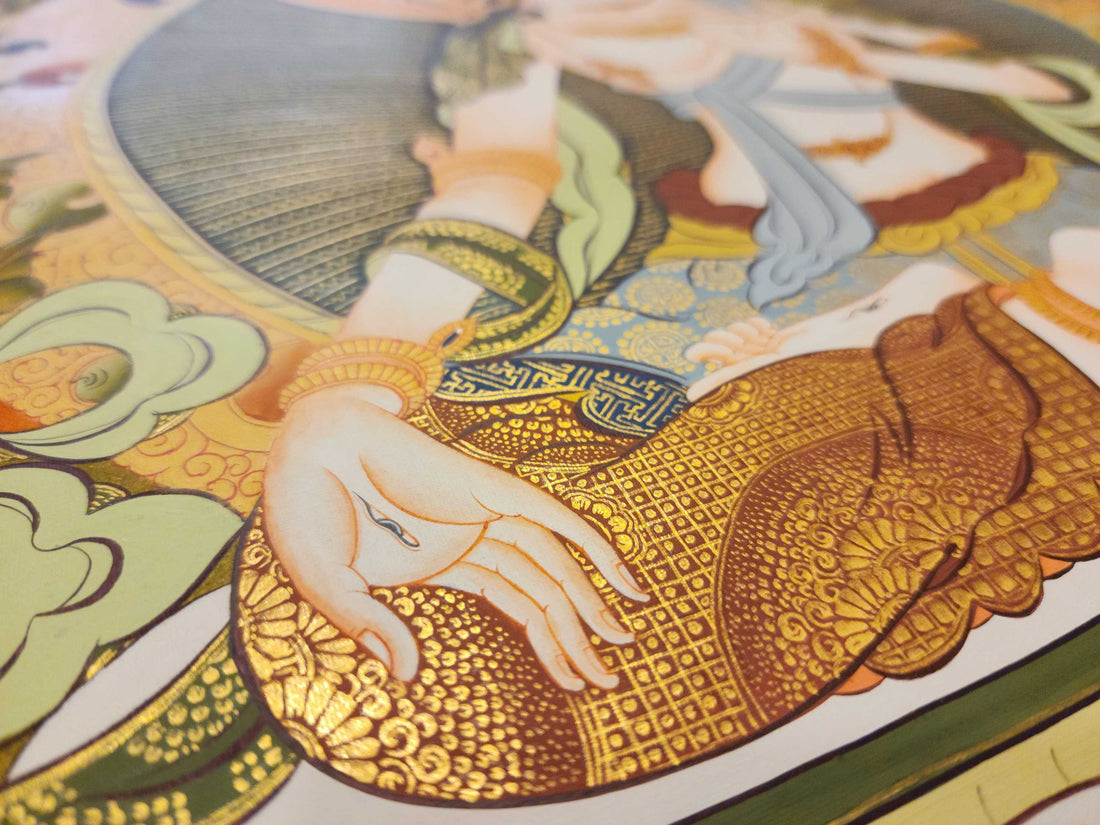
The Symbolism of the Golden Fish in Thangka Art
Share
Introduction
The Golden Fish is one of the Eight Auspicious Symbols (Ashtamangala) in Buddhism. In Thangka art, it represents freedom, happiness, and fearlessness. Swimming freely through the ocean of samsara (the cycle of life).
Meaning of the Golden Fish
— Symbolizes liberation from the ocean of suffering.
— Represents the joy and fearlessness that arise from following the Dharma.
Depiction in Thangka Art
— Usually shown as a pair of fish, representing harmony and unity.
— Often depicted in gold or yellow to symbolize purity and enlightenment.
— Sometimes seen alongside the other Auspicious Symbols in ceremonial offerings.
Spiritual Symbolism
— The pair of fish represent the two main rivers of India, the Ganges and Yamuna, symbolizing the balance of wisdom and compassion.
— Their effortless movement through water signifies spiritual freedom and the ability to flow through life without attachment.
Connection to Daily Practice
— Reminds practitioners to live with joy, fearlessness, and moral freedom.
— Symbolizes moving through life’s challenges with grace and balance.
Cultural and Ritual Use
— Golden Fish motifs are often used in Tibetan decorations, temple art, and jewelry.
— They are seen as signs of good fortune and auspicious beginnings.
Conclusion
In Thangka art, the Golden Fish is a radiant symbol of spiritual freedom and happiness. It encourages practitioners to swim through the waters of life with wisdom, confidence, and joy.
